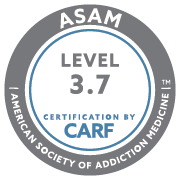Opioids, such as OxyContin and oxycodone, work wonders when prescribed for people in severe pain. However, prolonged or recreational use can lead to dependency or overdose as the body gets used to the drug.
Since most addictions to opioids start from a prescription, patients may want to know the difference between oxycodone and OxyContin. They may want to know which of the two drugs is more addictive. Additionally, they will want to know which one is likely to be abused or prone to recreational use.
New Directions for Women offers detox, inpatient, and outpatient treatment for oxycodone or OxyContin addiction. The potential for abuse of both these substances is very high, and once addicted help is often necessary. A customized treatment plan can be developed to best fit individual needs and wants.
Oxycodone vs. OxyContin: Differences and Similarities
Doctors have used opioids as painkillers or analgesics for over a century. There are different prescription opioids used to treat moderate to severe pain. These prescription opioids are also known as narcotic painkillers since they resemble controlled drugs like heroin. Oxycodone and OxyContin belong to this class of narcotic analgesics, meaning they are used to treat pain.
Differences
Essentially, oxycodone and OxyContin come from the same substance but in different formulations. The variation in formulation makes the two drugs differ in how the pain medications act in the body. While the two opioids bind to opioid receptors to block pain, the duration of this action is different.
Oxycodone is a short-acting painkiller that provides pain relief for about four to six hours. When a doctor prescribes oxycodone, the patient takes it 4 to six times to get a day free from pain. In most cases, oxycodone is used to manage acute pain, such as pain after surgery or an accident.
OxyContin, on the other hand, is long-acting, meaning a patient may experience up to twelve hours of pain relief from a single prescription. Patients on OxyContin pain treatment require to take it twice a day. Due to its long-acting ability, OxyContin is used to manage chronic pain, such as pain from cancer. However, OxyContin is not introduced directly to a patient: the patient gets oxycodone before the introduction of OxyContin.
Another difference between the two opioid prescription painkillers is their risk of abuse. While the two can be abused, recreational use inclines to oxycodone. Recreational users open the capsules or crush the tablets to smoke or sniff.
OxyContin is less likely to be smoked or sniffed as the tablet has two layers. The two layers are responsible for its long-acting property. When taken, the first layer releases the pain-relieving property in about twenty minutes. The second layer continues to act slowly, releasing the analgesic property over a period.
Is OxyContin Stronger than Oxycodone
Oxycodone is taken four to six times daily, but one can only take OxyContin twice daily. From this observation, OxyContin tablets are more potent than oxycodone. Taking OxyContin more than two times a day may be considered an overdose.
Similarities
Since the two opioids are the same substance in different formulations, their actions in the body are similar. Both drugs bind to opioid receptors to block pain.
The drugs also have a calming effect. However, when misused, they cause a euphoric feeling that makes users want to have more of the drug. Patients may also get tempted to increase the dosage as higher doses provide better relief for the pain. The increased tolerance can lead to substance abuse. Caution should be observed since an overdose of opioids can lead to a coma or death.
Side effects
The two drugs have similar side effects. Individuals may report the following side effects after taking oxycodone or OxyContin:
- Sweating
- Headaches
- Dry mouth
- Constipation
- General malaise
- Dizziness
- Nausea or vomiting
- Itchiness
- Fatigue
Addiction
The two drugs are highly addictive. Regardless of whether one is on oxycodone or OxyContin, the risk of physical dependence is the same. Prolonged or high dosage should be discouraged to mitigate the risk of addiction.
Signs of Addiction
Individuals who have developed physical dependence or addiction to oxycodone or OxyContin may display the following symptoms:
- They no longer get pain relief from the prescribed dosage. Such individuals risk overdosing if they increase the dosage without a prescription. If the individual is a recreational user, they need higher doses to get the desired feeling.
- Develop cravings
- Develop mental conditions due to the opioid use
- Experience withdrawal symptoms when they skip the drug
- Unsuccessful attempt to stop using the drug
Withdrawal Symptoms
Individuals with an opioid addiction may experience the following issues when they stop taking the drug:
- An increase in pain sensitivity
- Anxiety
- Muscle or bone pain
- Insomnia or changes in sleep pattern
- Diarrhea
- Chills
- High blood pressure or increased heart rate
- General weakness.
Treatment for Oxycodone or OxyContin Addition
Addiction to opioids is now considered a public health emergency. Individuals taking oxycodone or OxyContin should understand the risk of addiction. The risk of addiction exists even when the drug is taken as directed by the physician. Whether one develops an addiction from prescription opioid painkillers or recreational use, they should seek help from addiction rehab centers.
Individuals with an addiction to oxycodone or OxyContin and their loved ones should appreciate the challenges of self-treatment. Although they may want to quit, the craving and withdrawal symptoms make it difficult.
An addiction rehab center helps individuals overcome addiction and withdrawal symptoms in a safe and secure environment. Opioid addiction treatment is mostly inpatient to allow close monitoring and assistance in case of intense suffering.
Detox and Rehabilitation
Treatment for opioid addiction comprises a detox and rehabilitation phase. The detox phase flashes the drug from the body system, while the rehabilitation stage focuses on behavioral changes.
Opioid detox is a little complex and may require the prescription of other medications to deal with the withdrawal symptoms. Medication drugs for withdrawal symptoms mimic the effects of oxycodone or OxyContin but are not addictive. After the detox, individuals go through talk therapies to prevent relapses.
Oxycodone and OxyContin Addiction Treatment in Costa Mesa, California
Oxycodone and OxyContin are opioids that can lead to addiction and abuse. Opioid addiction can be best treated by starting with a detox program, which can include medication management and different therapies. Inpatient and outpatient treatment immediately after detox can help ensure a long-lasting recovery.
New Directions for Women is women-only oxycodone and OxyContin addiction rehabilitation center. At New Directions for Women, we approach opioid addiction treatment with the care and compassion needed by every woman. Contact us to learn more about our addiction treatment services.












